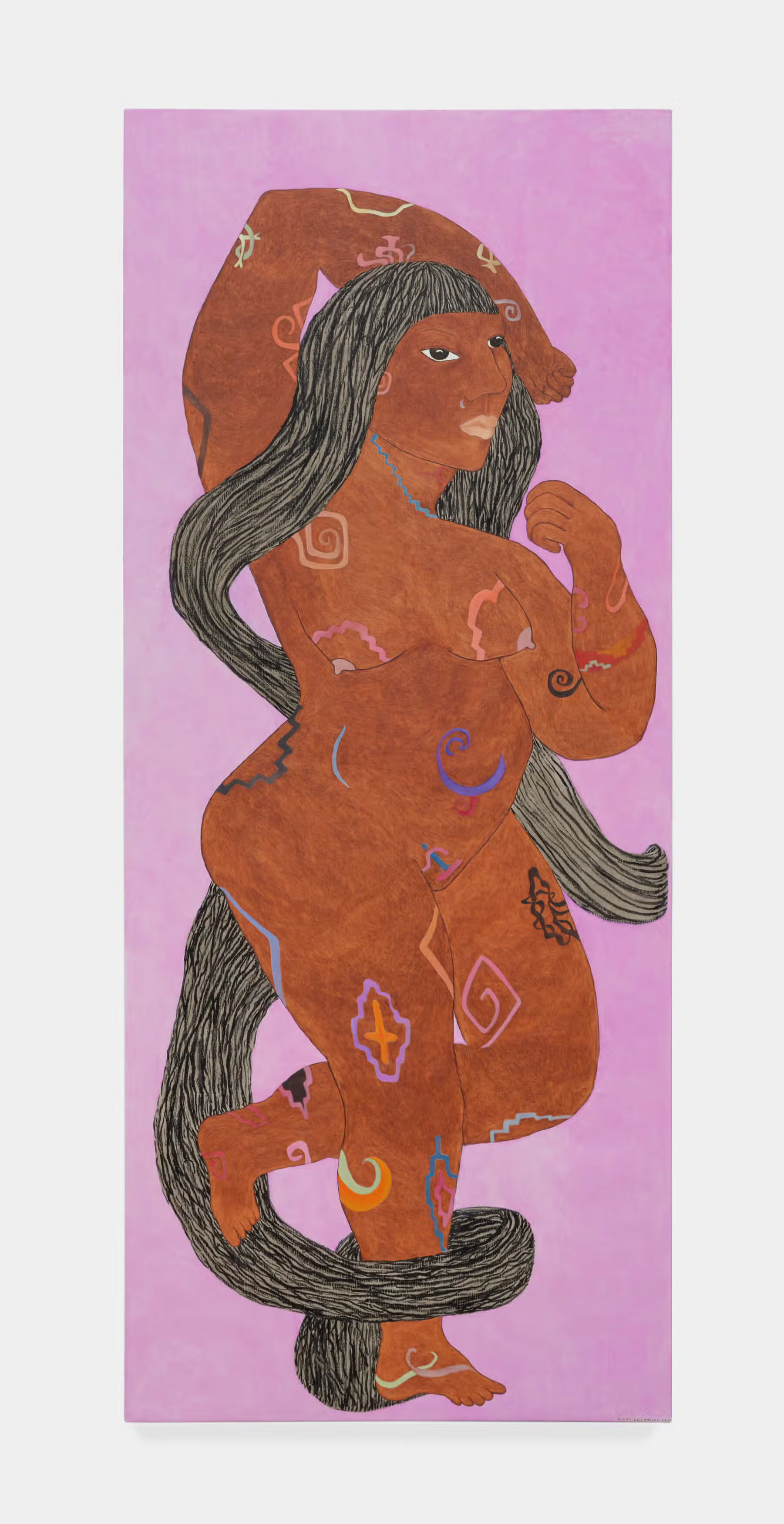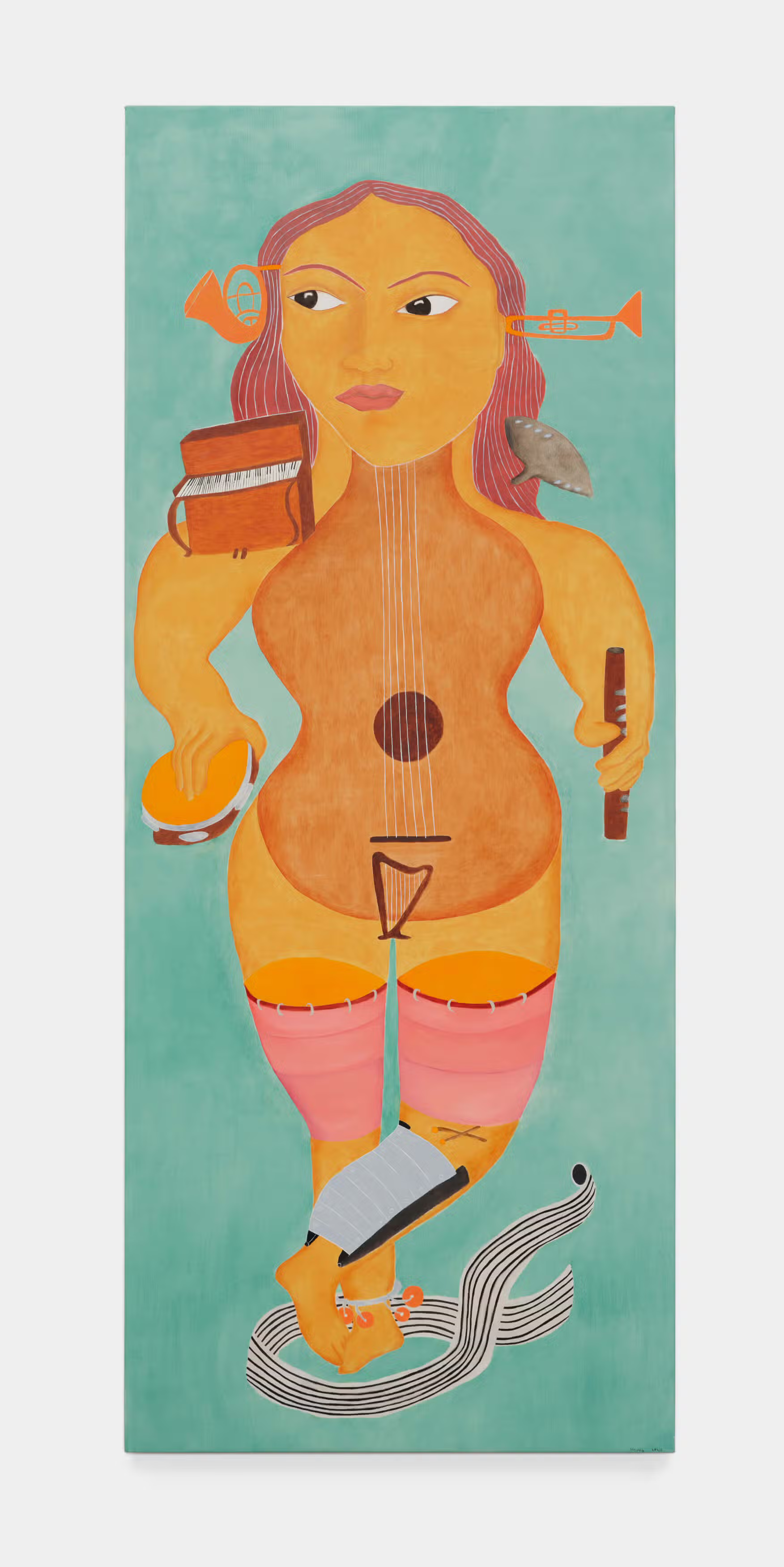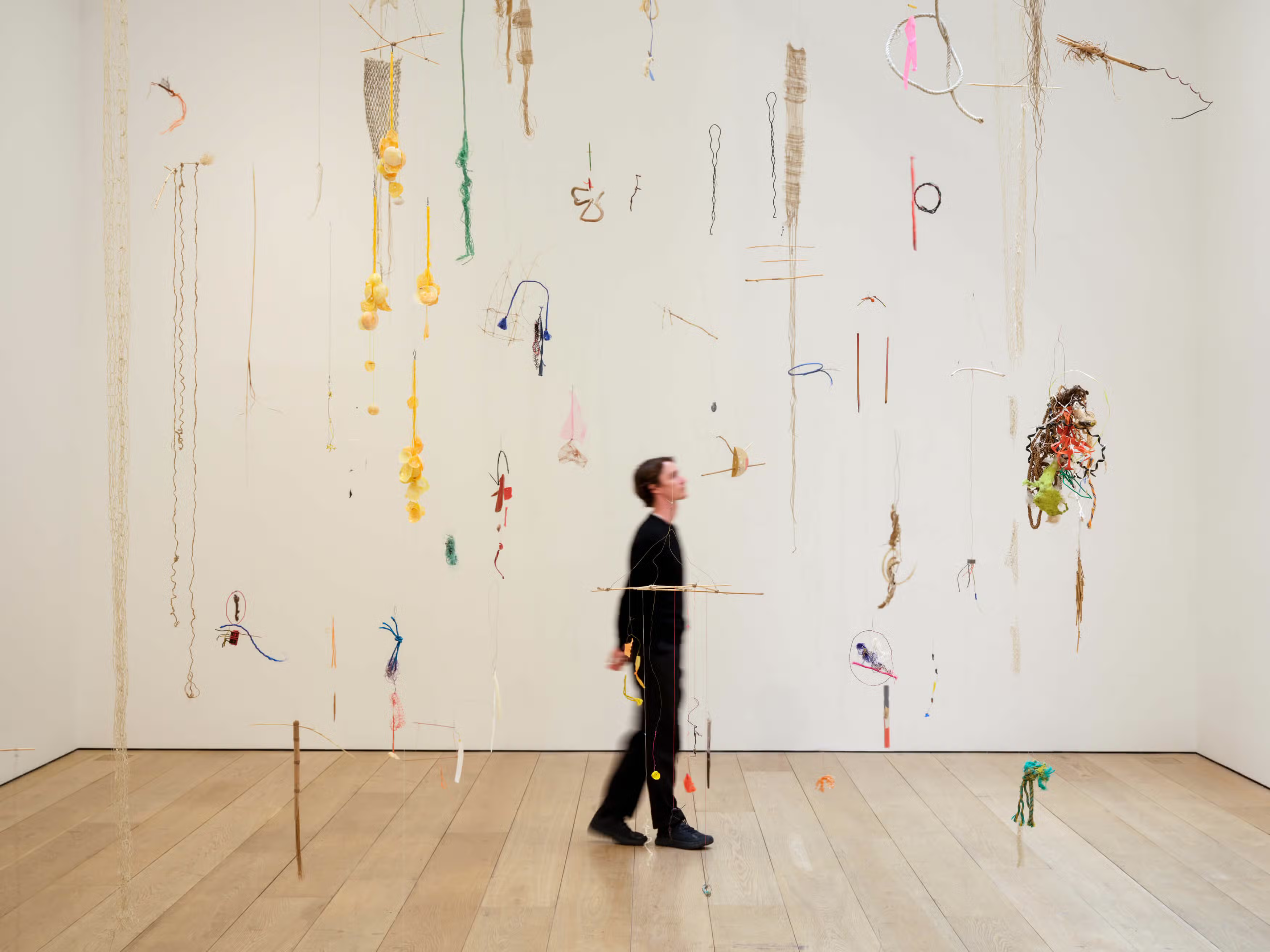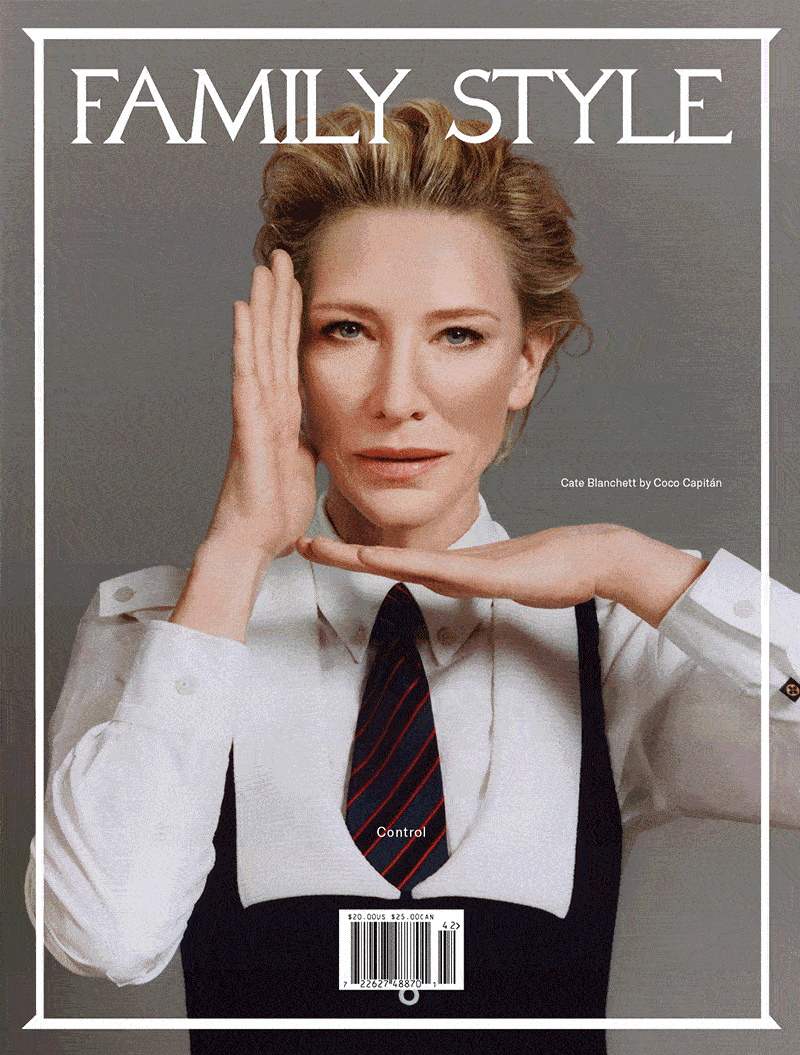
Cecilia Vicuña, Pachamama, 2024. Photography by Daniel Kukla. Image courtesy of the artist and Lehmann Maupin New York.
The tiger, with its fierce gaze and commanding presence, is a guardian spirit—an emblem of survival, courage, and the wild essence of the Amazon itself. In Cecilia Vicuña’s painting Hombre tigre, 2024, a human figure emerges from within the big cat, suggesting a symbiotic relationship, as if humanity’s very essence is forged in the embrace of the jungle’s raw vitality. In Vicuña's new solo exhibition “La Migranta Blue Nipple” at Lehmann Maupin in New York, nature is not merely a setting—it is a teacher, a mirror, and a force woven into the soul.
A series of paintings in the show recall her journey through the tropical rainforest in 1977, in which the Chilean visual artist, filmmaker, poet, and activist traveled from Bogotá to Rio de Janeiro to visit her cousin who was living in exile. After the military coup d’Etat against President Salvador Allende in her home country, Vicuña herself lived in exile first in London before she settled in Bogotá, Colombia in 1975 and soon after set across the Amazon to reunite with her cousin. Along the way, Vicuña was exposed to sacred practices and rituals of the Indigenous and Afro-Brazilian communities. The artist created approximately 30 drawings during her two-month-long voyage, a time in which she was greeted with warm hospitality while witnessing the harsh realities of poverty and colonial violence experienced by the Indigenous population.

Cecilia Vicuña, La música latinoamericana, 2024. Photography by Daniel Kukla. Image courtesy of the artist and Lehmann Maupin New York.
In the painting, La música latinoamericana, 2024, the goddess of Latin American music is a vessel rich with symbolism—her torso is shaped like a guitar, her head crowned with a trumpet, while she holds a flute in one hand. She clutches a tambourine in her other hand: her heartbeat. Her legs, wrapped in bandages, could symbolize wounds or the process of healing, bound together by the resilience Vicuña witnessed during her time in the Amazon. The various instruments are both adornments and extensions of the goddess’ body. She is a living orchestra, a one-woman band who, in the tradition of music, embodies the struggles and perseverance of her people.
In addition to works inspired by this formative trip, an installation on view, NAUfraga, 2022—first presented at the Venice Biennale 2022—is crafted from ropes and debris gathered from the shores of Venice, reflecting Vicuña’s powerful critique of environmental exploitation. The title, drawn from the Latin words navis (“ship”) and frangere (“to break”), symbolizes the destructive impact of human activity on the Earth, mirrored in the slow sinking of the Italian city into the sea.

Cecilia Vicuña, NAUfraga, 2022. Photography by Daniel Kuka. Image courtesy the artist and Lehmann Maupin New York.
Additionally, the exhibition marks the premiere of the artist’s film Quipu Womb, 2024, which was shot in Athens, Greece, while she created the towering fiber sculpture Quipu Womb (“The Story of the Red Thread Athens”), 2017, for the 14th edition of Documenta. Vicuña’s film blends poetry and performance to explore the origin of this work and its connection to Crete and Andes mythology, using rituals to heal the world’s memory and resist destructive forces. When viewed as a whole, “La Migranta Blue Nipple” calls for healing and environmental restoration. Vicuña’s multidimensional approach urges a shift in mindset to address global crises and create peace.
“La Migranta Blue Nipple” is on view through January 11, 2025 at Lehmann Maupin New York at 501 W 24th Street, New York, NY 10011.













